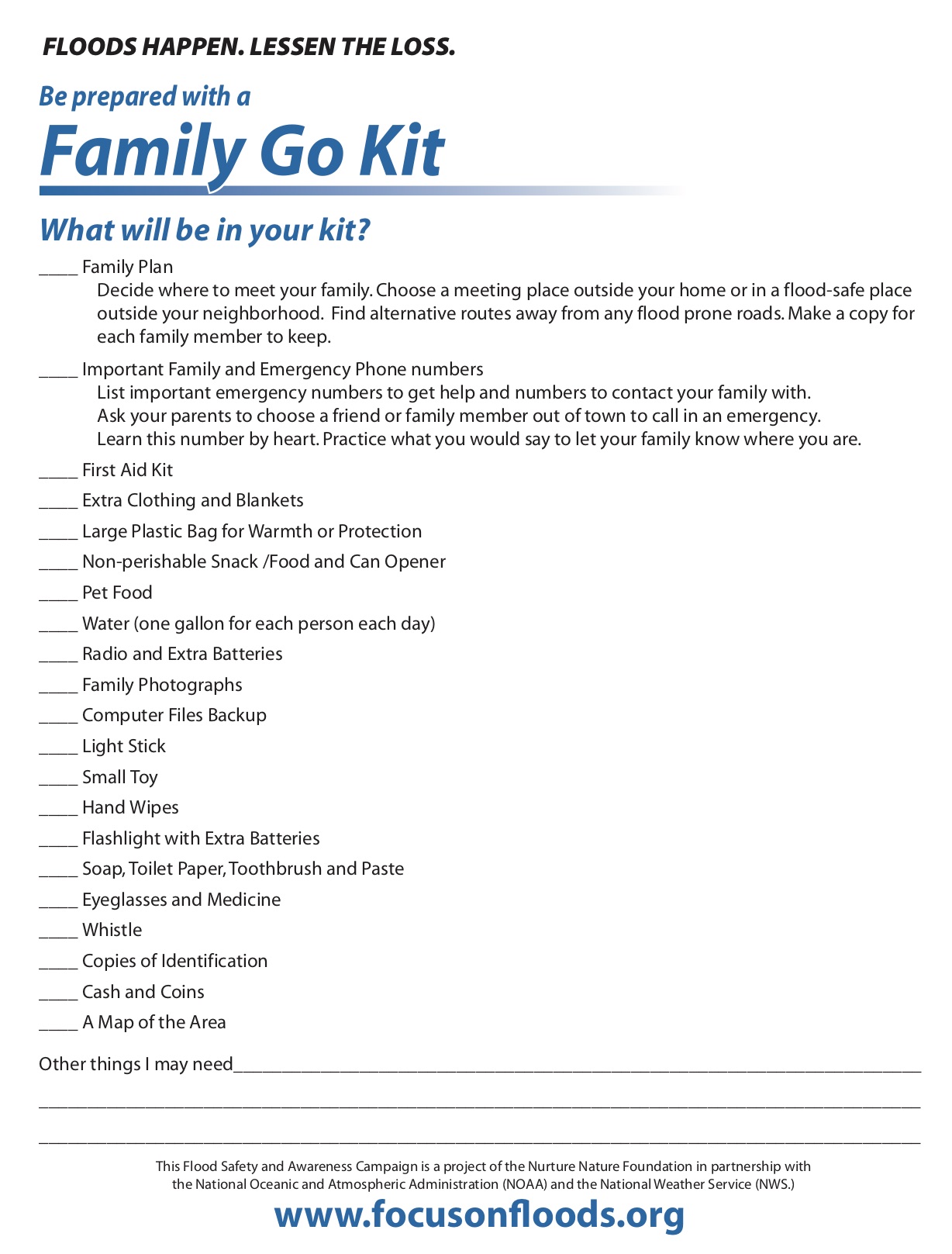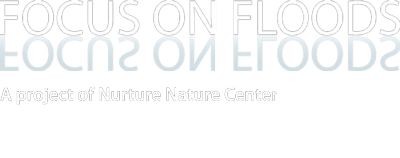What’s In a Flood Plan?
A flood plan is simply the advance methods your family, business or community have put together to help you respond quickly in the event of a flood near your property. Planning in advance can afford you extra critical time when a flood is coming, and can help you increase the odds of protecting your valuable documents, your real estate, and your personal property – including cherished belongings. A “rapid-response” plan can be as simple as a one-page plan that answers the following questions:
1. How will we find out about a coming flood?
The first part of a Flood Plan is putting yourself in a position to get some advance warning of an unfolding situation. Large scale flooding on the main stem of a river may occur over many hours or several days, but flash floods can strike in minutes.
Signing up for flood alerts and monitoring weather patterns and local conditions are important steps. People living along the Eastern seaboard need to be mindful of the flood potential from tropical moisture that can move up the coast and deposit huge amounts of rain (or snow that melts quickly) inland. Summertime thunderstorms are often the cause of flash floods, but such events can happen any time of year.
- Monitor National Weather Service Flood Forecasts Advanced Hydrologic Prediction Service
- You can also follow your local weather forecast: NWS local forecasts
- FEMA has general flood hazard maps online here, which serve as a starting point for determining your property’s relationship to nearby waterways.
2. At what river level does our property begin to flood?
First, determine “What’s Your Number?” This means visiting the National Weather Service’s Advanced Hydrologic Prediction Services website to learn the flood stage at the stream gauge nearest you. Click here to learn more. Then, determine the level at which flood waters begin to affect your property. This step may take research or personal experience to determine, but it is worth talking to neighbors to find out how high the river was during recent floods, and at what point flooding began in your neighborhood. Each neighborhood and each property has its own unique terrain and placement to consider when determining this factor, and it is safest to err on the side of caution. Give yourself plenty of time to evacuate.
3. Where is our family go-kit located? What does it contain?
Preparing your household for a flood involves steps that will help you be prepared for many different types of disasters. An emergency kit, or Family Go-kit, might include first aid supplies, a 3 day supply of non-perishable food, bottled water, a battery-powered radio, extra batteries and flashlights. Also, personal items like rubber boots and a rain jacket, warm clothes plus hygiene and sanitation products can be very helpful. A downloadable example of contents for a “Family Go-Kit” can be found here.
4. How will we learn about evacuation orders?
Find out how your community notifies residents of floods and how it makes evacuation orders. Make a commitment to follow evacuation orders the first time, to prevent emergency personnel from having to return for a rescue when travel is no longer safe.
5. What access roads can we use to evacuate in the case of rising waters?
Research indicates that the majority of flood-related fatalities occur as cars become trapped on roads that are known to flood. Talk to neighbors, emergency personnel and others to determine which access roads to your home flood, and when. Know what roads you regularly travel and whether or not they will flood, and plan alternate routes when needed.
6. What steps should we take to prepare our property?
Research the flood-proofing options available to you. Can you install a quick-disconnect furnace, or elevate electrical and mechanical equipment? Are there steps you can take to alleviate pressure on your structure if flooding does occur, to prevent extensive damage to doors and windows?
7. Where should our family meet if we are separated during a flood event?
Is our child’s school or spouse’s workplace in a flood zone, or are access roads subject to flooding? If so, what provisions should we make for their safety?
Other Considerations
- A written plan is essential for helping individuals and households to think through important issues in advance. You should also investigate whether there are similar plans in place for work, daycare and school and see how they work with your plan.
- Expect roadways to be blocked. Using a cell phone (sparingly, so as not to clog the network), you can determine whether other friends and family are safely sheltered where they are, and whether it is safer to wait out the storm than to risk dangerous travel across town through flood-prone roads.
- Remember, the most common things people regret not planning to save are: pets, photographs, and computers. Can you pack all these in a vehicle and drive to high ground in time?
Helpful Flood Terms
- Flood Watch: Flooding is possible. Tune in to NOAA Weather Radio, commercial radio, or television for information and check the flood alert sites on the Internet.
- Flash Flood Watch: Flash flooding is possible. Be prepared to move to higher ground; listen to NOAA Weather Radio, commercial radio, or television for information.
- Flood Warning: Flooding is occurring or will occur soon; if advised to evacuate, do so immediately.
- Flash Flood Warning: A flash flood is occurring; seek higher ground immediately.
Helpful Links
Find additional information on how to plan and prepare for floods, what to do during and after a flood, and learn about available resources by visiting the following:
